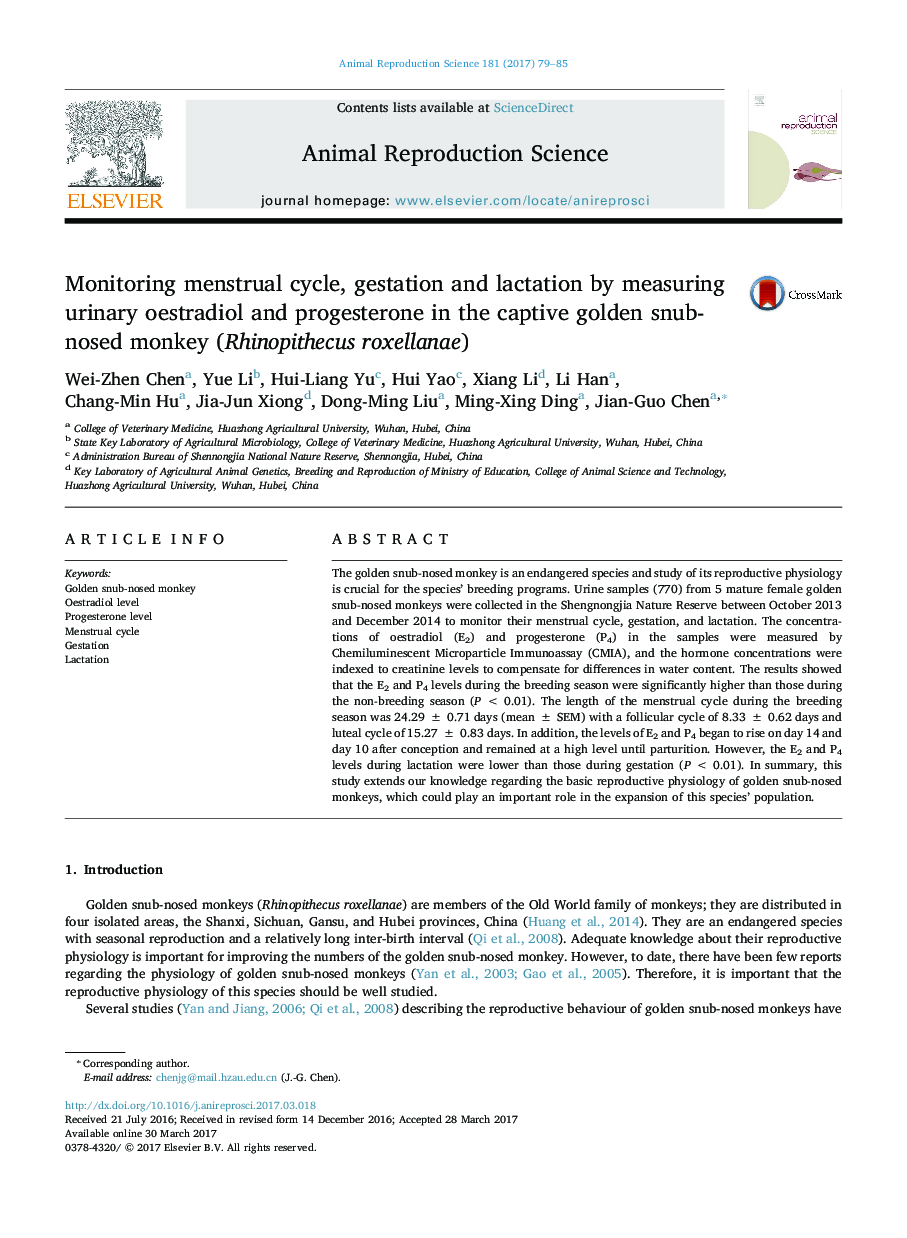| Article ID | Journal | Published Year | Pages | File Type |
|---|---|---|---|---|
| 5520282 | Animal Reproduction Science | 2017 | 7 Pages |
The golden snub-nosed monkey is an endangered species and study of its reproductive physiology is crucial for the species' breeding programs. Urine samples (770) from 5 mature female golden snub-nosed monkeys were collected in the Shengnongjia Nature Reserve between October 2013 and December 2014 to monitor their menstrual cycle, gestation, and lactation. The concentrations of oestradiol (E2) and progesterone (P4) in the samples were measured by Chemiluminescent Microparticle Immunoassay (CMIA), and the hormone concentrations were indexed to creatinine levels to compensate for differences in water content. The results showed that the E2 and P4 levels during the breeding season were significantly higher than those during the non-breeding season (P < 0.01). The length of the menstrual cycle during the breeding season was 24.29 ± 0.71 days (mean ± SEM) with a follicular cycle of 8.33 ± 0.62 days and luteal cycle of 15.27 ± 0.83 days. In addition, the levels of E2 and P4 began to rise on day 14 and day 10 after conception and remained at a high level until parturition. However, the E2 and P4 levels during lactation were lower than those during gestation (P < 0.01). In summary, this study extends our knowledge regarding the basic reproductive physiology of golden snub-nosed monkeys, which could play an important role in the expansion of this species' population.
